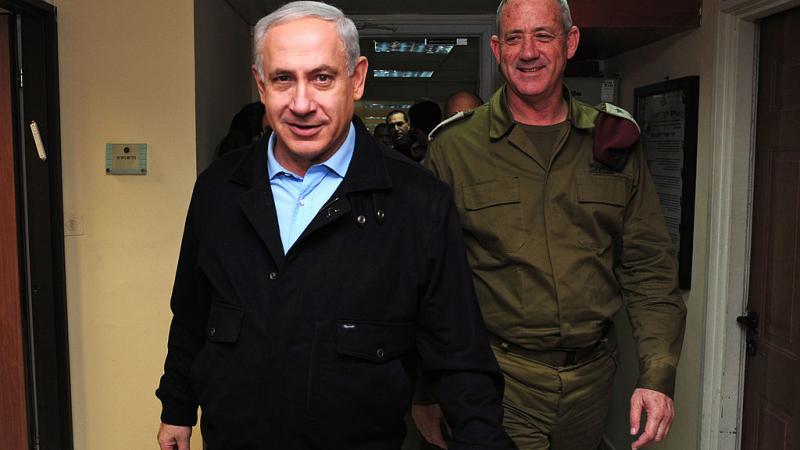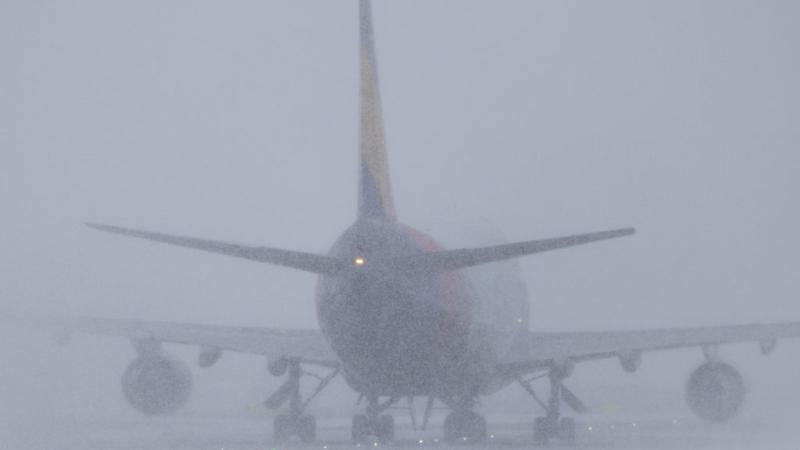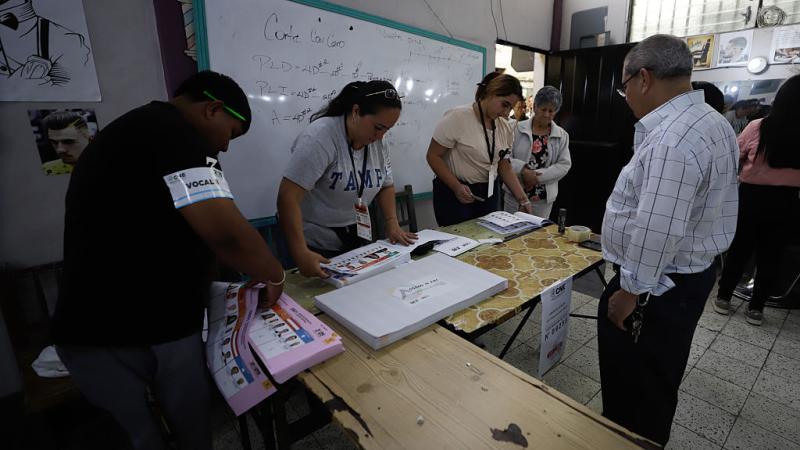Media bias, inaccuracies and the rush to judgment on full display during the Israel-Hamas war
Major media missteps during the Israel-Hamas conflict raise new concerns about biases and inaccuracies in once-trusted sources. Even staunch defenders of the mainstream media have started to openly criticize the rush to judgment and reliance upon shady sources in the race to be first on "breaking news."
Over the past few weeks, the rush to judgment of once-trusted major media outlets about the war between Hamas and Israel has given rise to new concerns about biases and inaccuracies in the sources that Americans have for years depended upon to be informed. That public trust — once seen as the life-blood of journalism — is eroding more quickly than ever.
Recent errant media coverage inflamed tensions between Jews and Arabs, provided false talking points to far-left, anti-Israel congresswomen, and uncovered a biased reporter covering the escalating Israel-Hamas war.
Last week, the Associated Press reported on the explosion at a Gaza City hospital with the headline, “At least 500 killed in Israeli airstrike on Gaza City hospital, Health Ministry says.” The headline came under scrutiny after doubts about the veracity of Hamas’ claims emerged. After the blast, the Israeli government denied that it was involved and said that an analysis of the event indicated that a misfired Hamas rocket was the most likely culprit, the Israeli government posted to X.
The AP relied solely on a report from the Gaza Health Ministry — controlled by Hamas — about the explosion. The Associated Press quietly edited the story, adjusting the headline to reflect the uncertainty: “At least 500 killed in Gaza City hospital explosion, Hamas and Israel exchange blame.” The Associated Press was not alone.
The New York Times followed up with a report calling the explosion an “Israeli strike.” Images of the headline were captured by the New York Post and the Israeli Defense Forces on X. Once again, the Times relied on testimony from “Palestinian officials” in Gaza. These claims were disputed by Israel and eventually, during his visit to Israel last week, President Joe Biden confirmed the reports by the Israeli government that the blast at the hospital was most likely the result of a Hamas rocket that failed to hit its target.
In an editors’ note released on Monday, the New York Times finally admitted its mistakes in its coverage of the incident. “The Times’s initial accounts attributed the claim of Israeli responsibility to Palestinian officials, and noted that the Israeli military said it was investigating the blast,” the editors’ note reads. “However, the early versions of the coverage — and the prominence it received in a headline, news alert and social media channels — relied too heavily on claims by Hamas, and did not make clear that those claims could not immediately be verified. The report left readers with an incorrect impression about what was known and how credible the account was,” the note continued.
However, the damage had already been done in the rush to report Hamas’ claims. These errant headlines and reports riled up pro-Palestinian protestors across the Middle East, the United States and in the broader West.
In one instance, the Israeli Embassy in Amman, Jordan, was threatened by protestors that were held back by Jordanian security forces. In Lebanon, protestors attempted to break through barriers at a square on the way to the U.S. embassy in Beirut, the Lebanese capital. As a result of the unrest, the U.S. State Department has urged citizens not to travel to Lebanon and recommended that citizens make arrangements to leave as soon as possible.
Far-left U.S. Congresswomen Rashida Tlaib, D-Mich., and Ilhan Omar, D-Minn., also used the false story to rally their supporters. Both congresswomen decried the alleged hospital bombing, even after evidence challenging the reliability of Hamas’ claims emerged.
The Wall Street Journal conducted a technical analysis of footage of the explosions at the hospital, and stated conclusively that "a failed rocket [fired from Gaza] caused the deadly explosion at Al-Ahli Arab Hospital."
“Israel just bombed the Baptist Hospital killing 500 Palestinians (doctors, children, patients) just like that,” Tlaib posted to X when news of the explosion started spreading on social media. “@POTUS this is what happens when you refuse to facilitate a ceasefire & help de-escalate,” she continued.
“Bombing a hospital is among the gravest of war crimes,” Omar posted to X. “The IDF reportedly blowing up one of the few places the injured and wounded can seek medical treatment and shelter during a war is horrific.”
Tlaib repeated the false statements about the hospital bombing during a pro-Palestine rally outside of the U.S. Capitol during a protest last week. “That's what's been really painful — just continue to watch people think it's okay to bomb a hospital where children,” Tlaib told the crowd of protestors. "You know, what's so hard sometimes is watching those videos and the people telling the kids, 'Don't cry.' But like, let them cry! And they're shaking, and somebody — you know this — they keep telling them not to cry in Arabic. They can cry, I can cry, we all can cry. If we're not crying, something is wrong," Tlaib said.
Some of these protestors later went on to overrun the Cannon House Office Building, an act which led to multiple arrests by Capitol Police.
This month, after Hamas’ attack on Israel, Issam Adwan, an Associated Press reporter, was discovered to have a history of anti-Semitic and extreme, pro-Palestine posts on his social media accounts. He was later suspended by the newswire service pending a review.
Adwan's social media had labeled Israel as “a racist regime that is so similar to the Nazis” and labeled Israel as a “colonialist” and “apartheid” state, according to a review of social media posts by HonestReporting — an organization dedicated to combating “ideological prejudice in journalism and the media, as it impacts Israel.”
Issam Adwan did not immediately respond to a request for comment from Just the News.
Adwan contributed to a number of articles for AP after Hamas’ attack on Israel this month. In one article, Adwan and his co-author wrote that this conflict between Israel and Hamas “is potentially more volatile now, with Israel’s far-right government stung by the security breach and with Palestinians in despair over a never-ending occupation in the West Bank and suffocating blockade of Gaza.” The language appears to justify the anger of Gaza’s citizens while the "journalists" refuse to call the attacks against Israel “terrorism.”
The Associated Press Stylebook reference guide for reporting on the Israel-Hamas war tells readers that it does not use the word terrorism or terrorist to describe actions or groups because the words “have become politicized, and are often applied inconsistently.” AP instead uses “militants” to describe Hamas. As reported earlier this month, the Hamas attacks meet the most widely accepted definitions of terrorism held by the United Nations.
Adwan’s reporting with the AP — once a trusted source for unbiased and factual reporting — calls into question the outlet's coverage of important events.
Covering conflict in the Middle East has historically been difficult, and the defenders of mainstream media may argue that that fact lessens the culpability of the the AP and The New York Times, among the others, that reported the hospital bombing without checking the facts. The outlets did, however, fail to confirm the strike from other sources besides Hamas, which is designated a foreign terrorist organization by the United States and had just perpetrated the deadliest attack in Israel’s history.
But the rush to judgement is nothing new. In one example, Reuters once published manipulated photographs purporting to show Israel bombing civilians. The photos were discovered to be fraudulent and were taken down. Reuters subsequently “toughened” its photo rules afterwards. Yet, staged photographs have long been republished by major media.
The same "authorities" upon which mainstream media has often relied — as in the hospital bombing fiasco — have been caught creating fake videos. Nine years ago, Hamas released a video showing a line of corpses allegedly killed by Israel, but the footage shows one of the corpses moving.
This latest episode may prove a turning point for how newsrooms may recalibrate the need for speed as more important than accuracy. Brian Stelter, a former CNN media critic known for his left-leaning views and staunch defense of mainstream media may be the one of first to break ranks and call for a change.
In an interview reported on by the New York Post, Stelter said: "This was an atrocious series of mistakes by many different major newsrooms all around the same time [...] and unfortunately I don’t think there’s been enough follow-up or accountability to make sure it doesn’t happen again.”
The Facts Inside Our Reporter's Notebook
Links
- Associated Press reported
- a misfired Hamas rocket was the most likely culprit
- quietly edited the story
- captured by the New York Post
- Israeli Defense Forces on X
- President Joe Biden confirmed the reports by the Israeli government
- editorsâ note released on Monday
- threatened by protestors
- U.S. State Department has urged citizens not to travel to Lebanon
- Tlaib posted to X
- @POTUS
- Omar posted to X
- Tlaib repeated the false statements
- overrun the Cannon House Office Building
- The Wall Street Journal conducted a technical analysis
- a review of social media posts
- HonestReporting
- one article, Adwan and his coauthor write
- Associated Press Stylebook reference guide
- most widely excepted definitions of terrorism
- Reuters once published manipulated photographs
- staged photographs have long been republished
- perpetrated the deadliest attack in Israelâs history
- interview reported on by the New York Post















